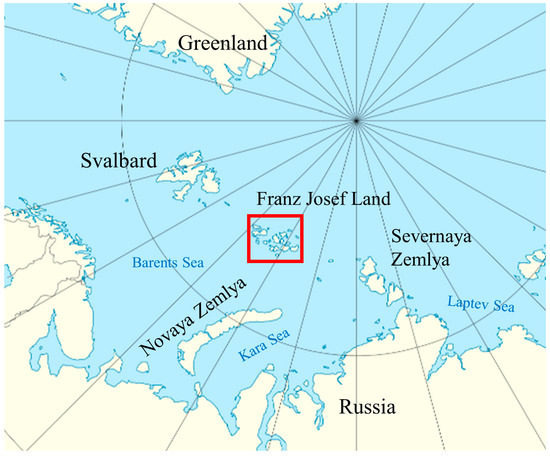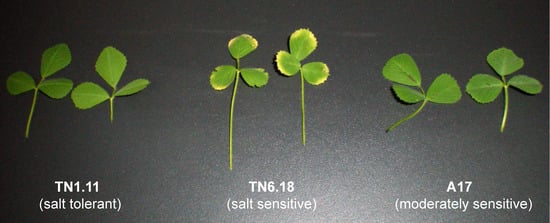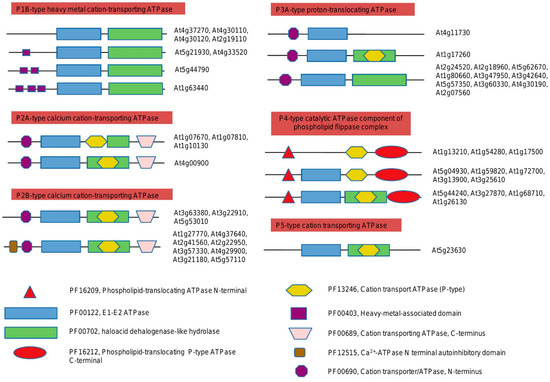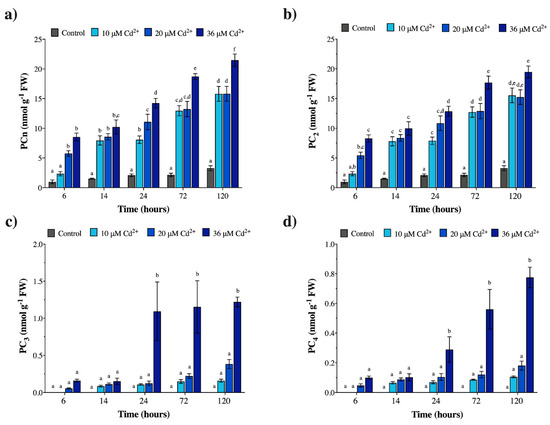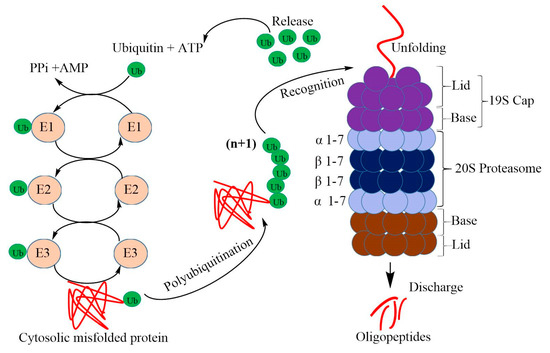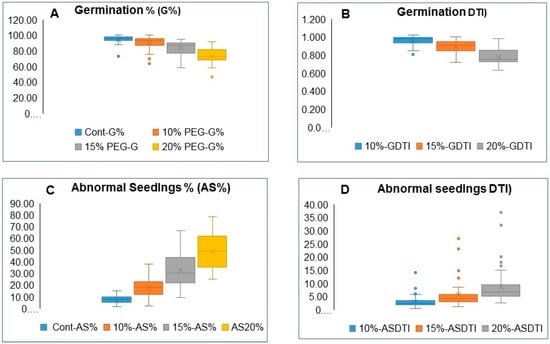Plant, Algae and Lichen Response to Abiotic Stress: from Molecules to Ecosystems
Share This Topical Collection
Editors
 Prof. Dr. Luigi Sanita' di Toppi
Prof. Dr. Luigi Sanita' di Toppi
 Prof. Dr. Luigi Sanita' di Toppi
Prof. Dr. Luigi Sanita' di Toppi
E-Mail
Website
Collection Editor
Department of Biology, University of Pisa, Via Luca Ghini 13, 56126 Pisa, Italy
Interests: heavy metals; metal homeostasis; phytochelatins; phytochelatin synthase; glutathione; plant evolution; lichens
Special Issues, Collections and Topics in MDPI journals
 Prof. Dr. Martin Backor
Prof. Dr. Martin Backor
 Prof. Dr. Martin Backor
Prof. Dr. Martin Backor
E-Mail
Website
Collection Editor
Department of Botany, Institute of Biology and Ecology, P. J. Safarik University in Kosice, Manesova 23, 041 67 Kosice, Slovakia
Interests: lichens; algae; mosses; abiotic stress; heavy metals; secondary metabolism of lichens; polar ecology of lower plants
Special Issues, Collections and Topics in MDPI journals
 Dr. Anna Aksmann
Dr. Anna Aksmann
 Dr. Anna Aksmann
Dr. Anna Aksmann
E-Mail
Website
Collection Editor
Department of Plant Physiology and Biotechnology, Faculty of Biology, University of Gdansk, Wita Stwosza Str. 59, PL-80-308 Gdansk, Poland
Interests: abiotic stress; anthropogenic pollutants (herbicides, pharmaceuticals); green algae response to stress factors; Chlamydomonas reinhardtii; plant physiology and biochemistry
Topical Collection Information
Dear Colleagues,
We pleased to announce that, we are launching a Topical Collection of Plants entitled “Plant, Algae, and Lichen Response to Abiotic Stress: From Molecules to Ecosystems”.
We would be delighted to receive your authoritative contribution, and we look forward to working together to collect high-quality research articles, and review articles in all the fields related to the above topic.
Since the aim of this Topical Collection is to illustrate, through selected works, frontier research in "Plant, Algae, and Lichen Response to Abiotic Stress: From Molecules to Ecosystems", we encourage Editorial Board Members of our Section to contribute by sending papers reflecting the latest progress in their research field, or to invite relevant experts and colleagues to do so.
In particular (but not exclusively), this Collection welcomes high-level manuscripts related to interactions between plants (and/or the above-mentioned organisms) and:
- Elevated temperature and/or low temperature (chilling and freezing);
- Salinity stress;
- Excess (flooding) and/or lack of water (drought);
- Hypoxia and/or anoxia;
- Excess and/or lack of light, with the impact on photosynthesis and other primary processes;
- Mineral nutrient excess and/or shortage;
- Oxidative stress;
- Nitrogen oxides (NOx) stress;
- Tropospheric ozone and/or photochemical smog;
- Acid rain or marine aerosols;
- Heavy metals and/or metalloids;
- Liquid or solid particulate matter, including nanoparticles;
- Microplastics;
- Organic pollutants, with particular reference to dioxins, polychlorinated biphenyls (PCB), furans, and polycyclic aromatic hydrocarbons (PAH);
- Volatile organic compounds (VOC);
- Biomonitoring and/or bioaccumulation;
- Bioremediation and/or phytoremediation.
Prof. Dr. Luigi Sanita' di Toppi
Prof. Martin Backor
Dr. Anna Aksmann
Guest Editors
Manuscript Submission Information
Manuscripts should be submitted online at www.mdpi.com by registering and logging in to this website. Once you are registered, click here to go to the submission form. Manuscripts can be submitted until the deadline. All submissions that pass pre-check are peer-reviewed. Accepted papers will be published continuously in the journal (as soon as accepted) and will be listed together on the collection website. Research articles, review articles as well as short communications are invited. For planned papers, a title and short abstract (about 100 words) can be sent to the Editorial Office for announcement on this website.
Submitted manuscripts should not have been published previously, nor be under consideration for publication elsewhere (except conference proceedings papers). All manuscripts are thoroughly refereed through a single-blind peer-review process. A guide for authors and other relevant information for submission of manuscripts is available on the Instructions for Authors page. Plants is an international peer-reviewed open access semimonthly journal published by MDPI.
Please visit the Instructions for Authors page before submitting a manuscript.
The Article Processing Charge (APC) for publication in this open access journal is 2700 CHF (Swiss Francs).
Submitted papers should be well formatted and use good English. Authors may use MDPI's
English editing service prior to publication or during author revisions.
Keywords
- Elevated temperature and/or low temperature (chilling and freezing)
- Salinity stress
- Excess (flooding) and/or lack of water (drought)
- Hypoxia and/or anoxia
- Excess and/or lack of light, with the impact on photosynthesis and other primary processes
- Mineral nutrient excess and/or shortage
- Oxidative stress
- Nitrogen oxides (NOx) stress
- Tropospheric ozone and/or photochemical smog
- Acid rain or marine aerosols
- Heavy metals and/or metalloids
- Liquid or solid particulate matter, including nanoparticles
- Microplastics
- Organic pollutants, with particular reference to dioxins, polychlorinated biphenyls (PCB), furans, and polycyclic aromatic hydrocarbons (PAH)
- Volatile organic compounds (VOC)
- Biomonitoring and/or bioaccumulation
- Bioremediation and/or phytoremediation.
Published Papers (7 papers)
Open AccessArticle
Influence of Orographic Factors on the Distribution of Lichens in the Franz Josef Land Archipelago
by
Sergey Kholod, Liudmila Konoreva and Sergey Chesnokov
Viewed by 482
Abstract
During a geobotanical study of the Franz Josef Land archipelago, 111 lichen species were recorded on 130 sample plots. The significance of orographic factors in the distribution of lichens was assessed using principal component analysis (PCA) and multiple regression analysis. It was found
[...] Read more.
During a geobotanical study of the Franz Josef Land archipelago, 111 lichen species were recorded on 130 sample plots. The significance of orographic factors in the distribution of lichens was assessed using principal component analysis (PCA) and multiple regression analysis. It was found that the absolute altitude and distance from the glacier are of the greatest importance for crustose lichens, while for fruticose lichens, the most critical factors were the slope exposure and steepness. Along the altitudinal gradient, the number of species decreased (from 88 to 25). The highest number of species (90) was recorded at distances of 0.1 to 1.0 km from the glacier edge, which is explained by the unstable species composition of areas recently released from under the glacier. The number of species in all groups generally decreased (from 81 to 52) with increasing slope steepness. With an increasing heat supply of slopes (on a gradient from northern to southern), the number of species steadily increased in all groups (from 39 to 75). The low sum of the explained variance values for the first two PCA components (21%) characterizes the specificity of the natural environment of polar deserts, where there is no leading environmental factor.
Full article
►▼
Show Figures
Open AccessCommunication
Involvement of Polyamine Metabolism in the Response of Medicago truncatula Genotypes to Salt Stress
by
Chrystalla Antoniou, Xavier Zarza, Gholamreza Gohari, Sima Panahirad, Panagiota Filippou, Antonio F. Tiburcio and Vasileios Fotopoulos
Cited by 15 | Viewed by 2947
Abstract
Salinity constitutes one of the most important causes leading to severe reduction in plant yield. Several reports correlate the accumulation of polyamines in plants with tolerance to abiotic stress cues. The present study examined three
Medicago truncatula genotypes with differing sensitivities to salinity
[...] Read more.
Salinity constitutes one of the most important causes leading to severe reduction in plant yield. Several reports correlate the accumulation of polyamines in plants with tolerance to abiotic stress cues. The present study examined three
Medicago truncatula genotypes with differing sensitivities to salinity (TN1.11, tolerant; Jemalong A17, moderately sensitive; TN6.18, sensitive), with the aim of examining the genotype-specific involvement of the polyamine metabolic pathway in plant response to salinity. The study was carried out with leaves harvested 48 h after watering plants with 200 mM NaCl. A comprehensive profile of free polyamines was determined using high performance liquid chromatography. All genotypes showed spermidine and spermine as the most abundant polyamines under control conditions. In salinity conditions, spermine levels increased at the expense of putrescine and spermidine, indicating a drift of polyamine metabolism towards the synthesis of increasing polycationic forms as a stress response. The increasing balance between high and low polycationic forms was clearly diminished in the salt-sensitive genotype TN6.18, showing a clear correlation with its sensitive phenotype. The polyamine metabolic profile was then supported by molecular evidence through the examination of polyamine metabolism transcript levels by RT-qPCR. General suppression of genes that are involved upstream in the PA biosynthetic pathway was determined. Contrarily, an induction in the expression of genes involved in the biosynthesis of spermine and spermidine was observed, in agreement with the metabolic analysis. A significant induction in diamino oxidase expression, involved in the catabolism of putrescine, was specifically found in the sensitive genotype ΤΝ6.18, indicating a distinct metabolic response to stress. Present findings highlight the involvement of polyamines in the defense response of
Medicago genotypes showing sensitivity to salt stress.
Full article
►▼
Show Figures
Open AccessArticle
Evolution of Plant Na+-P-Type ATPases: From Saline Environments to Land Colonization
by
Siarhei A. Dabravolski and Stanislav V. Isayenkov
Cited by 6 | Viewed by 2224
Abstract
Soil salinity is one of the major factors obstructing the growth and development of agricultural crops. Eukaryotes have two main transport systems involved in active Na
+ removal: cation/H
+ antiporters and Na
+-P-type ATPases. Key transport proteins, Na
+/K
+
[...] Read more.
Soil salinity is one of the major factors obstructing the growth and development of agricultural crops. Eukaryotes have two main transport systems involved in active Na
+ removal: cation/H
+ antiporters and Na
+-P-type ATPases. Key transport proteins, Na
+/K
+-P-ATPases, are widely distributed among the different taxa families of pumps which are responsible for keeping cytosolic Na
+ concentrations below toxic levels. Na
+/K
+-P-ATPases are considered to be absent in flowering plants. The data presented here are a complete inventory of P-type Na
+/K
+-P-ATPases in the major branches of the plant kingdom. We also attempt to elucidate the evolution of these important membrane pumps in plants in comparison with other organisms. We were able to observe the gradual replacement of the Na+-binding site to the Ca
2+-binding site, starting with cyanobacteria and moving to modern land plants. Our results show that the α-subunit likely evolved from one common ancestor to bacteria, fungi, plants, and mammals, whereas the β-subunit did not evolve in green algae. In conclusion, our results strongly suggest the significant differences in the domain architecture and subunit composition of plant Na
+/K
+-P-ATPases depending on plant taxa and the salinity of the environment. The obtained data clarified and broadened the current views on the evolution of Na
+/K
+-P-ATPases. The results of this work would be helpful for further research on P-type ATPase functionality and physiological roles.
Full article
►▼
Show Figures
Open AccessArticle
The Application of a Commercially Available Citrus-Based Extract Mitigates Moderate NaCl-Stress in Arabidopsis thaliana Plants
by
Johannes Loubser and Paul Hills
Cited by 7 | Viewed by 3162
Abstract
Aims: The aim of this study was to assess the effect of BC204 as a plant biostimulant on
Arabidopsis thaliana plants under normal and NaCl-stressed conditions. Methods: For this study, ex vitro and in vitro growth experiments were conducted to assess the effect
[...] Read more.
Aims: The aim of this study was to assess the effect of BC204 as a plant biostimulant on
Arabidopsis thaliana plants under normal and NaCl-stressed conditions. Methods: For this study, ex vitro and in vitro growth experiments were conducted to assess the effect of both NaCl and BC204 on basic physiological parameters such as biomass, chlorophyll, proline, malondialdehyde, stomatal conductivity, Fv/Fm and the expression of four NaCl-responsive genes. Results: This study provides preliminary evidence that BC204 mitigates salt stress in
Arabidopsis thaliana. BC204 treatment increased chlorophyll content, fresh and dry weights, whilst reducing proline, anthocyanin and malondialdehyde content in the presence of 10 dS·m
−1 electroconductivity (EC) salt stress. Stomatal conductivity was also reduced by BC204 and NaCl in source leaves. In addition, BC204 had a significant effect on the expression of salinity-related genes, stimulating the expression of salinity-related genes
RD29A and
SOS1 independently of NaCl-stress. Conclusions: BC204 stimulated plant growth under normal growth conditions by increasing above-ground shoot tissue and root and shoot growth in vitro. BC204 also increased chlorophyll content while reducing stomatal conductivity. BC204 furthermore mitigated moderate to severe salt stress (10–20 dS·m
−1) in
A. thaliana. Under salt stress conditions, BC204 reduced the levels of proline, anthocyanin and malondialdehyde. The exact mechanism by which this occurs is unknown, but the results in this study suggest that BC204 may act as a priming agent, stimulating the expression of genes such as
SOS1 and
RD29A.
Full article
►▼
Show Figures
Open AccessArticle
Eukaryotic and Prokaryotic Phytochelatin Synthases Differ Less in Functional Terms Than Previously Thought: A Comparative Analysis of Marchantia polymorpha and Geitlerinema sp. PCC 7407
by
Erika Bellini, Claudio Varotto, Marco Borsò, Lorenza Rugnini, Laura Bruno and Luigi Sanità di Toppi
Cited by 19 | Viewed by 2870
Abstract
This paper reports functional studies on the enzyme phytochelatin synthase in the liverwort
Marchantia polymorpha and the cyanobacterium
Geitlerinema sp. strain PCC 7407. In vitro activity assays in control samples (cadmium-untreated) showed that phytochelatin synthase was constitutively expressed in both organisms. In the
[...] Read more.
This paper reports functional studies on the enzyme phytochelatin synthase in the liverwort
Marchantia polymorpha and the cyanobacterium
Geitlerinema sp. strain PCC 7407. In vitro activity assays in control samples (cadmium-untreated) showed that phytochelatin synthase was constitutively expressed in both organisms. In the presence of 100 µM cadmium, in both the liverwort and the cyanobacterium, the enzyme was promptly activated in vitro, and produced phytochelatins up to the oligomer PC
4. Likewise,
in vivo exposure to 10–36 µM cadmium for 6-120 h induced in both organisms phytochelatin synthesis up to PC
4. Furthermore, the glutathione (GSH) levels in
M. polymorpha were constitutively low (compared with the average content in higher plants), but increased considerably under cadmium stress. Conversely, the GSH levels in
Geitlerinema sp. PCC 7407 were constitutively high, but were halved under metal treatments. At odds with former papers, our results demonstrate that, as in
M. polymorpha and other plants, the cyanobacterial phytochelatin synthase exposed to cadmium possesses manifest transpeptidasic activity, being able to synthesize phytochelatins with a degree of oligomerization higher than PC
2. Therefore, prokaryotic and eukaryotic phytochelatin synthases differ less in functional terms than previously thought.
Full article
►▼
Show Figures
Open AccessReview
Protective Roles of Cytosolic and Plastidal Proteasomes on Abiotic Stress and Pathogen Invasion
by
Md. Sarafat Ali and Kwang-Hyun Baek
Cited by 19 | Viewed by 3206
Abstract
Protein malfunction is typically caused by abiotic stressors. To ensure cell survival during conditions of stress, it is important for plant cells to maintain proteins in their respective functional conformation. Self-compartmentalizing proteases, such as ATP-dependent Clp proteases and proteasomes are designed to act
[...] Read more.
Protein malfunction is typically caused by abiotic stressors. To ensure cell survival during conditions of stress, it is important for plant cells to maintain proteins in their respective functional conformation. Self-compartmentalizing proteases, such as ATP-dependent Clp proteases and proteasomes are designed to act in the crowded cellular environment, and they are responsible for degradation of misfolded or damaged proteins within the cell. During different types of stress conditions, the levels of misfolded or orphaned proteins that are degraded by the 26S proteasome in the cytosol and nucleus and by the Clp proteases in the mitochondria and chloroplasts increase. This allows cells to uphold feedback regulations to cellular-level signals and adjust to altered environmental conditions. In this review, we summarize recent findings on plant proteolytic complexes with respect to their protective functions against abiotic and biotic stressors.
Full article
►▼
Show Figures
Open AccessArticle
Screening for Drought Tolerance in Maize (Zea mays L.) Germplasm Using Germination and Seedling Traits under Simulated Drought Conditions
by
Abdelfattah Badr, Hanaa H. El-Shazly, Rasha A. Tarawneh and Andreas Börner
Cited by 65 | Viewed by 6650
Abstract
Maize is known to be susceptible to drought stress, which negatively affects vegetative growth and biomass production, as well as the formation of reproductive organs and yield parameters. In this study, 27 responsive traits of germination (G) and seedlings growth were evaluated for
[...] Read more.
Maize is known to be susceptible to drought stress, which negatively affects vegetative growth and biomass production, as well as the formation of reproductive organs and yield parameters. In this study, 27 responsive traits of germination (G) and seedlings growth were evaluated for 40 accessions of the Leibniz Institute of Plant Genetics and Crop Plant Research (IPK) germplasm collection, under no stress and simulated drought stress treatments by 10%, 15%, and 20% of polyethylene glycol (PEG). The three treatments significantly reduced G% and retarded seedlings growth, particularly the 15% and 20% PEG treatments; these two treatments also resulted in a significant increase of abnormal seedlings (AS). The heritability (
H2) and correlations of the traits were estimated, and drought tolerance indices (DTIs) were calculated for traits and accessions. The
H2 of G% values were reduced, and
H2 for AS% increased as the PEG stress increased. Positive correlations were found between most trait pairs, particularly shoot and root traits, with 48 highly significant correlations under no stress and 25 highly significant correlations under the 10% PEG treatments, particularly for shoot and root traits. The medium to high heritability of shoot and root seedling traits provides a sound basis for further genetic analyses. PCA analysis clearly grouped accessions with high DTIs together and the accessions with low DTIs together, indicating that the DTI indicates the stress tolerance level of maize germplasm. However, the resemblance in DTI values does not clearly reflect the origin or taxonomic assignments to subspecies and varieties of the examined accessions.
Full article
►▼
Show Figures
Planned Papers
The below list represents only planned manuscripts. Some of these
manuscripts have not been received by the Editorial Office yet. Papers
submitted to MDPI journals are subject to peer-review.
Title: Landraces: a natural treasure for abiotic stress tolerance
Authors: Tommaso Michele Moles and Diana Santelia
Affiliation: Institute of Integrative Biology, ETH Zurich, Universitätstrasse 16, 8092 Zurich, Switzerland
Abstract: Over the last century, anthropogenic pressure and global climate change have exacerbated the frequency and the extent of detrimental environmental stresses, such as drought, salinization, sudden flooding and extreme temperatures. These events, which often occur simultaneously, are challenging the global agriculture and the quest to satisfy the increasing food demand of a growing population. The expected scenario will be more catastrophic especially in arid and semi-arid areas, including the Mediterranean basin. The selection of crops well-adapted to adverse climate conditions will be essential to sustain agricultural productivity. Landraces (or traditional/local varieties) are often characterized by interesting traits, like tolerance to abiotic/biotic stresses and adaptability to low-input agriculture, which have been acquired and selected in local agro-ecosystems. In this review, we evaluate the current literature on the strategies developed by landraces in response to abiotic stress, highlighting the potential of this genetic material as a priority target of future scientific investigation and a feasible solution for breeding stress-tolerant germplasm.








